Extreme cold fascinates most people. Every time the subject comes up on my site, the readership grows tenfold. And I get a lot of emails and suggestions of articles I should publish. One of the emails I got after publishing Johan Forsberg´s well read and well written article Paradise or Hell was a long very interesting letter from Alaska. And after reading it for the first time, I really wanted to publish his story. Joe Henderson is a young American who writes like a young Jack London when it comes to drama, but most important is that he really loves being outdoors in low temperatures. And he describes very well what happens to a human being in these low temperatures. He also brings up the subject of windchill, which is often forgotten when describing temperatures and which makes life a tad more dangerous. Especially in open spaces like the both Poles or on any of the worlds open tundra. However, having said that, during Johan Ivarsson´s and my Kolyma expedition back in 2004-05, as quick as temperatures went below -45°C (-49°F) there was hardly ever any wind. Read more about the windchill factor here!
-99°F (72 C) Below
By
Joe Henderson-Alaskan Arctic Expeditions
“How are the dogs in the -99°F windchill?” Andrea asked me on the satellite phone.
“Heck, they’re fine. Humans are the wimps out here. I wish I were as tough as those dogs,” I replied.
When you think about it, we humans are as vulnerable as babies in cold weather unless we cover our naked bodies with multiple layers of fleece and caribou skin boots, goose down parkas, wool hats, scarves and mitts. Living in extreme cold temperatures is deadly business, but the human body is a remarkable creation.
I’ll admit, 25 years ago it was tough for me to handle -40°F. I remember wearing heavy insulated mukluks, coveralls and parka with large beaver skin mitts that were the size of baseball mitts. Heck, I haven’t dressed like that in a very long time, except I wore a parka for a while when it was -99°F windchill last year. Now, -40°F feels mild. Maybe it’s not ideal weather for wearing shorts and t-shirt, but relatively speaking, it’s not too bad. Nowadays, I’m comfortable with fleece jackets and light insulated coveralls and gloves, although I still wear heavy caribou mukluks most of the time. They’re just comfortable as can be in any temperature, warm or cold.
Over the past three decades I have acclimated to the arctic environment and I’m sure there’s some genetics involved which helps the acclimation process since I have some Scandinavian roots, but if I can acclimate then so should the dogs. My point is, since the Alaskan malamute roots are from the Arctic then a malamute that is living in, let’s say Arizona, can acclimate to the arctic environment as well. So, if you think your dog is a couch potato, cream puff sissy, think again. I bet he or she would become as comfortable in the Arctic as a polar bear, given the chance.
Now, for those folks that do not know what it feels like to live, sleep, camp and work in blistering cold weather, let me give you a peek into the frozen world of an Arctic winter. First, if you’ve ever watched my dogs in cold weather, you’d see their energy increases tenfold, and the same with me. Your energy increases the colder it gets outside. I believe it’s more of a survival instinct than anything else. The faster and harder you work, the warmer you are.
After you awake in the morning and crawl out of the tent to meet the new frozen day, you feel the cold slap you in the face like a steel plate. Nonetheless you march outside to check on your furry friends, which will not give you so much as a second glance until you start serving them breakfast. They’re toasty warm and snuggled up tight and conserving energy. They’d prefer to stay there until it’s time to eat and hit the trail.
You’re going to be surprised how your lungs feel when you take that first deep invigorating breath of -65°F air. It’s the cleanest air on earth. If you are not a runner or you are not into cardiovascular exercising you will most likely cough when you suck in the cold air. And if you exert yourself, either run, ski or snowshoe, you might cough up a little blood which will scare the hell out of you. But don’t worry this is normal for folks that aren’t in shape. What happens is the cold air expands in your lungs and stretches you’re a capillaries, and no, you aren’t freezing your lungs. That is just an old wives tale. I mean, if you could freeze your lungs, I’d have done it years ago, as well as every living creature and human being in the Arctic, including the Inuit.
Many folks will certainly get frostbite on their faces in those temperatures the moment they step outside their tent. So you might feel like bees are stinging your nose and cheeks. This stinging feeling, my friend, is frostbite. Small blotches on your face are turning white while the skin is crystallizing. If you do not warm the frozen areas immediately by placing the palm of your hand on the frozen patches they will eventually blister and peel and some may scar a little. It’s nothing to worry too much about, at least you’re still alive and the dogs are doing fine. While you are feeding the happy-go-lucky, howling dogs you’ll notice everything is seemingly louder than normal. Like your steps in the dry snow, the dogs rustling about and your breath as it vaporizes when it hits the cold air.
Your eyelashes will certainly freeze together occasionally so you might be walking around with one eye open and the other frozen shut. Again this is normal, just don’t blink!!
Now, you are occupied thawing your frostbitten face, prying your eyelids open, stomping your foot to get the blood flowing to your frozen big toe, and cussing all the while trying to feed the dogs. Then, a glimpse of sunshine crests the mountain peak. You throw back your hood to absorb the five minutes of winter sun before it falls again behind the mountain, only to get attacked by those “bees” on your cheeks. You’re at the mercy of Mature Nature and there’s no escape. Then, a hint of envy comes over you. If only you were an Alaskan malamute!! But you’re not. So, you dive back into your tent, fire up the wood stove until it turns the color of a big red apple, and set a kettle filled with snow on the stove. Once the water boils, you add the coffee grounds and the aroma of steaming brew fills your little canvas world. You know you have to travel, so you strip off your mukluk and sock, hold your toes over the hot stove and grit your teeth in aching pain as the feeling returns to your frozen flesh. Afterwards, you pack your bags, and prepare to hit the trail. That brings us to our next subject—traveling in -99°F.
To be continued…
Joe Henderson is an author, 28 year veteran Arctic explorer, and a pioneer in dog sledding in the sense that he has perfected a method of travel which allows him to travel solo for up to 5 months at a time without resupply or even so much as seeing another human being. It was only within the past 5 years that Joe even began to travel with an Iridium satellite phone. Prior to that, he had absolutely no contact with civilization for months on end. Joe continues his multi-month expeditions every winter in an extremely remote region of the Arctic National Wildlife Refuge (ANWR) where he records snow depth and ground condition data for climate research. For more information about Joe Henderson and his adventures please check out his website www.alaskanarcticexpeditions.com or follow on Facebook; Alaskan Arctic Expeditions

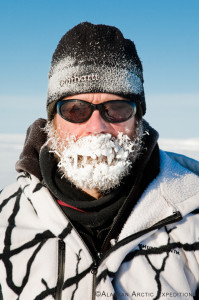
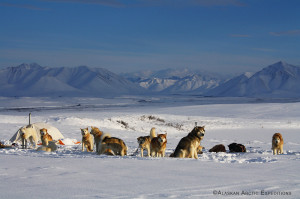
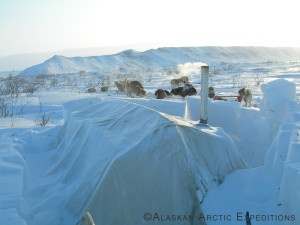
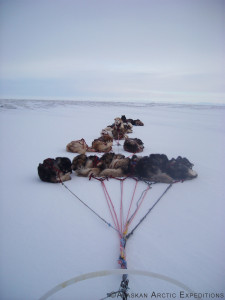

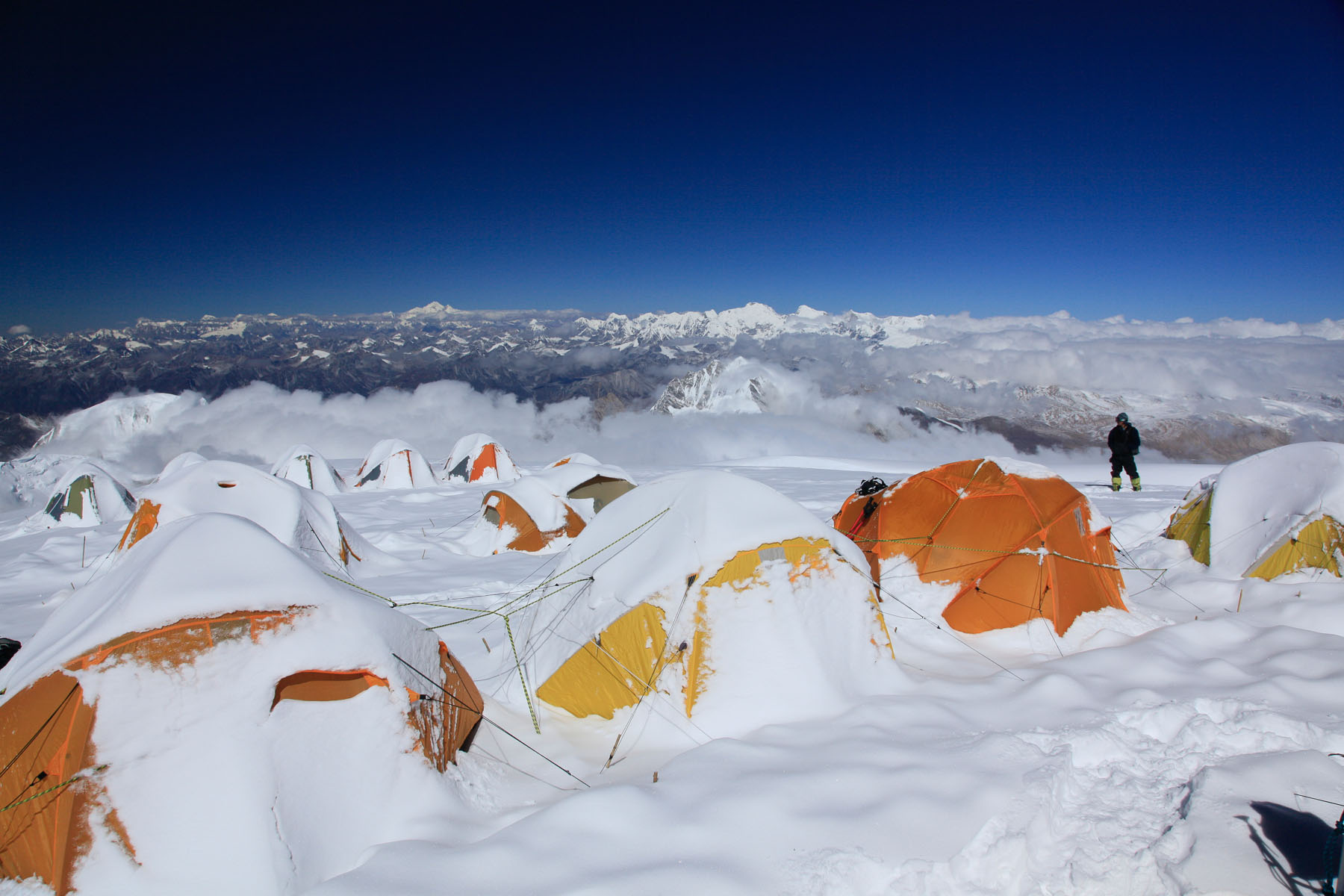
Very good and interesting article and looking forward to read more
Very nice article !
Joe’s wife, Andrea here. Thanks for sharing Joe’s article about the extreme cold of Alaska’s Arctic on your site. Your readers can see more on our website http://www.alaskanarcticexpeditions.com and our blog at hendersonmalamutes.com.
Cheers!